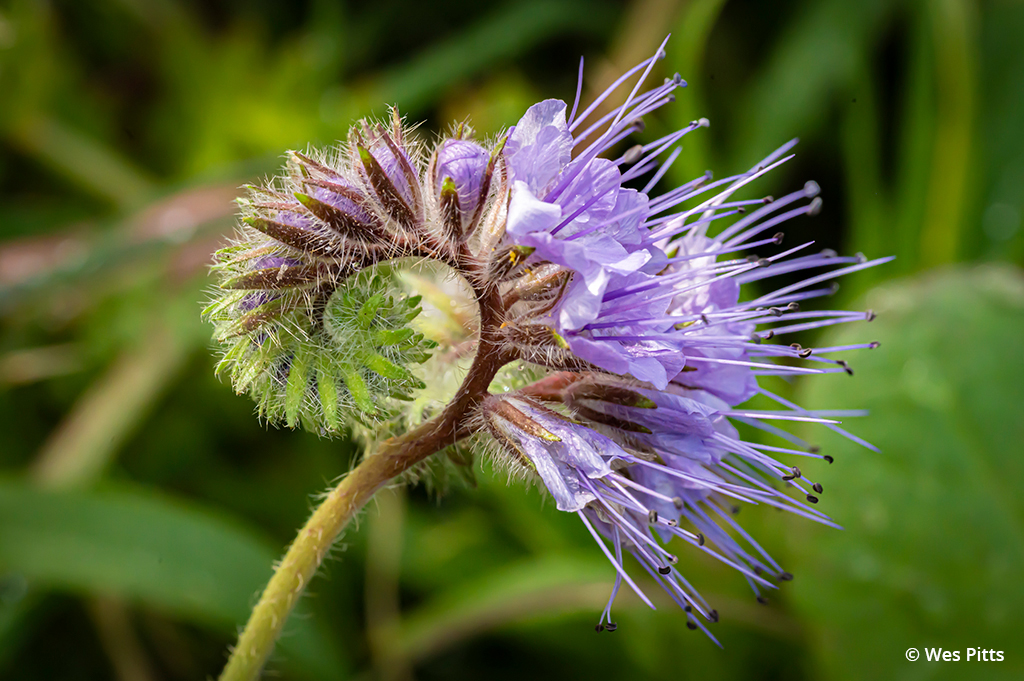
The elegant spiral of a fiddleneck flower. Shooting handheld allowed me to refine the framing of the flower to my liking from an angle I wouldn’t have been able to achieve easily on a tripod. Single frame capture. Exposure: 1/800 sec., ƒ/20, ISO 2000.
Nikon’s expanding lens collection for its mirrorless Z system now includes two macro options, the NIKKOR Z MC 105mm f/2.8 VR S and the NIKKOR Z MC 50mm f/2.8. The 50mm is light and compact, can focus as close as 0.53 feet, and, with its wider focal length, is a great option as an everyday lens with macro capabilities.
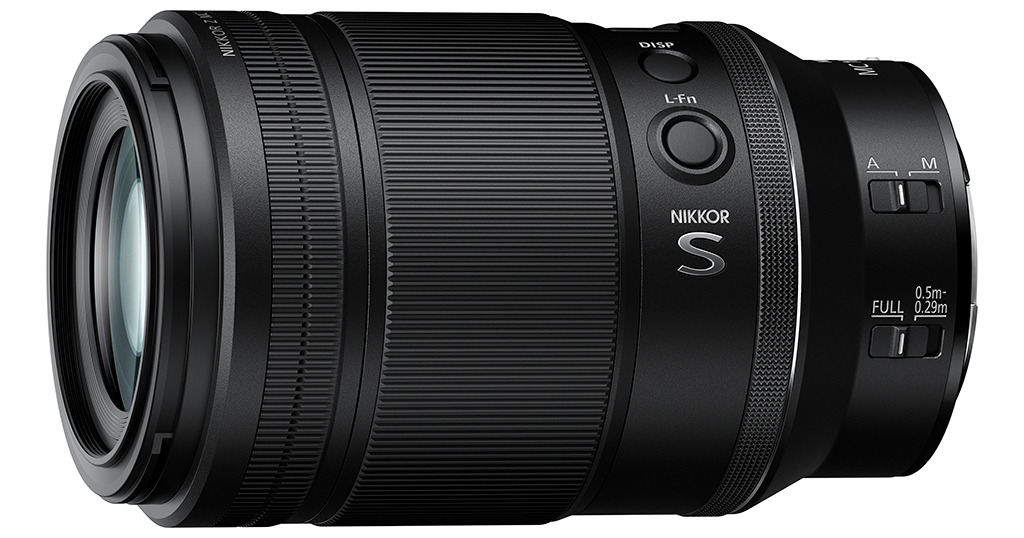
NIKKOR Z MC 105mm f/2.8 VR S
The NIKKOR Z MC 105mm f/2.8 VR S is the system’s pro telephoto macro, larger and heavier but with the longer focal length that many macro pros prefer because it allows you to shoot at a greater distance from your subject. (Wider lenses like the 50mm require you to be really close to achieve maximum magnification, increasing the chances that you’ll scare off live subjects.) The 105mm is also an “S-Line” lens, Nikon’s designation for its premium optics, which contributes to its size and weight, as well as its price. It features extensive weather sealing, sophisticated coatings to reduce reflections and ghosting, and a fluorine coat on the front element to repel dust and water, which is particularly helpful when you’re getting so close to your subjects.
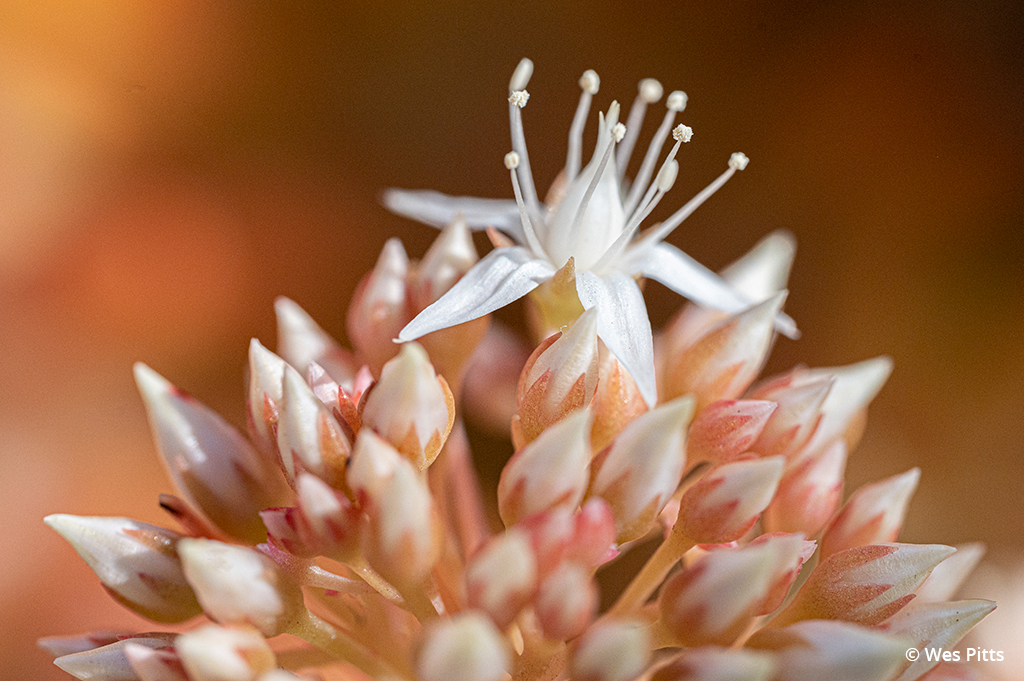
The graceful symmetry of this Coppertone stonecrop sedum bloom reminds me of a floral bouquet. Single frame capture, handheld. Exposure: 1/4000 sec., ƒ/9, ISO 1800.
The great thing about macro photography is that you don’t need to go far to find subjects. Practicing the art of macro—a challenging skill to perfect—is something you can do just about anywhere. Our typically mild, sunny climate in California means there’s almost always something in bloom in the garden, allowing me to try out the NIKKOR Z MC 105mm f/2.8 VR S with a variety of subjects.
The lens feels substantial but not heavy. It’s actually about 12 percent lighter than its DSLR sibling, the AF-S VR Micro-Nikkor 105mm f/2.8G IF-ED, though an inch longer. Like many NIKKOR Z lenses, it includes programmable controls that weren’t available on DSLR lenses. There’s the L-Fn button, which can be customized as a shortcut to a favorite setting, and a Control Ring that can be set to adjust aperture, ISO or exposure compensation without taking your eye from the viewfinder. The Control Ring has a texture and size that are distinct from the focusing ring, making them easy to distinguish by feel.
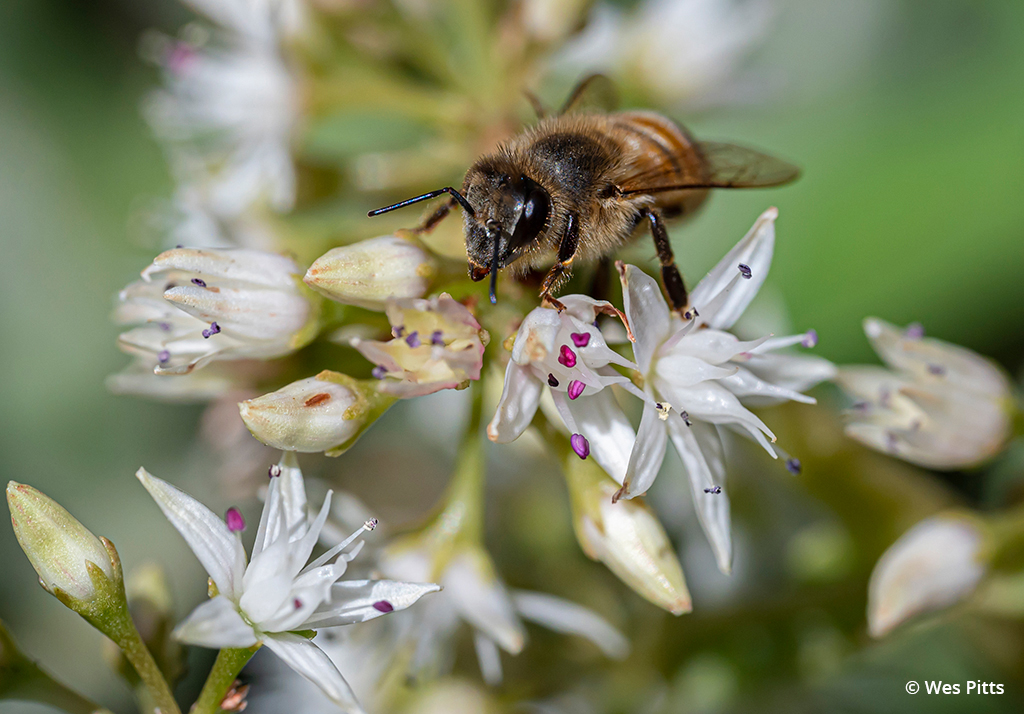
Honeybee on jade flower. Using the Z 6’s subject-tracking AF with the lens’ focus limiter enabled, I was able to quickly lock and maintain focus on the bee as it moved about collecting pollen. Single frame capture, handheld, cropped to show detail. Exposure: 1/2500 sec., ƒ/9, ISO 1000.
Additional controls on the lens barrel are an AF/manual focus switch and an AF focus limiter that, when enabled, constrains the AF system to a range from its minimum focusing distance (about 11.5 inches) to just under 20 inches. Using this setting for macro work will help reduce the likelihood of the AF system hunting for focus.
.jwplayer { margin-bottom: 20px; margin-left: auto; margin-right: auto; }
Another noteworthy feature on the barrel is the Lens Info Panel, a mini LCD that can be toggled to display reproduction ratio, focus distance and aperture setting. Its placement at the top of the barrel makes it especially useful when shooting on a tripod, with your composition locked in, as you experiment with the effects of fine-tuning focus or adjusting depth of field.
I shot primarily handheld with the NIKKOR Z MC 105mm f/2.8 VR S and my Nikon Z 6. It’s a personal preference, but I generally prefer working handheld as I find a tripod to be an anchor when I’m playing with composition. That’s easier to get away with when shooting wide-angle landscapes but more of a challenge with macro subjects where even tiny camera movements are magnified. Though I did use a tripod for focus-stacked composites, I found that the lens’ 4.5 stops of Vibration Reduction, combined with a fast shutter speed, eliminated the need for a tripod for single-shot photographs in decent light.
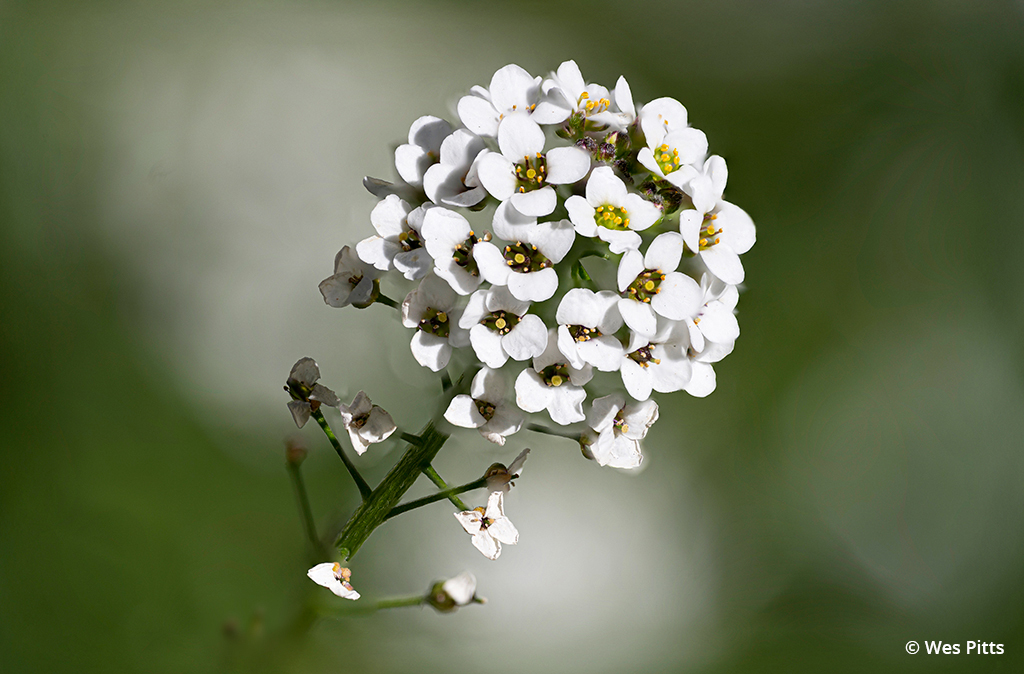
Sweet alyssum flower grows wild around my home and for several months each year displays these white puffball flowers. Closer inspection reveals the bright yellow anther of its stamen. The sharpness of this focus-stacked composite is impressive, despite the persistent breeze that rarely left the flower stationary. One hundred focus-stacked frames, shot from a tripod. Exposure: 1/4000 sec., ƒ/4, ISO 140.
Speaking of focus stacking, it’s a great technique for overcoming the very shallow depth of field inherent to macro work. Nikon Z cameras can automatically shoot a series of frames, slightly shifting focus for each, which can then be combined in Photoshop or specialty focus-stacking software. Though the NIKKOR Z MC 105mm f/2.8 VR S can be stopped down to apertures as small as ƒ/32 to maximize depth of field in a single frame, that might result in sharp details in areas of the frame where you don’t want them. By shooting at larger apertures in combination with focus stacking, you can achieve sharpness where you want it in the composition while background elements have a dreamy bokeh.
I’m accustomed to focusing manually with focus peaking turned on for stationary subjects, but that’s a more difficult approach for moving subjects like honeybees. Instead, I found the AF performance of the lens and camera combo to be very fast and precise with subject tracking enabled while using the lens’ focus limiter function.
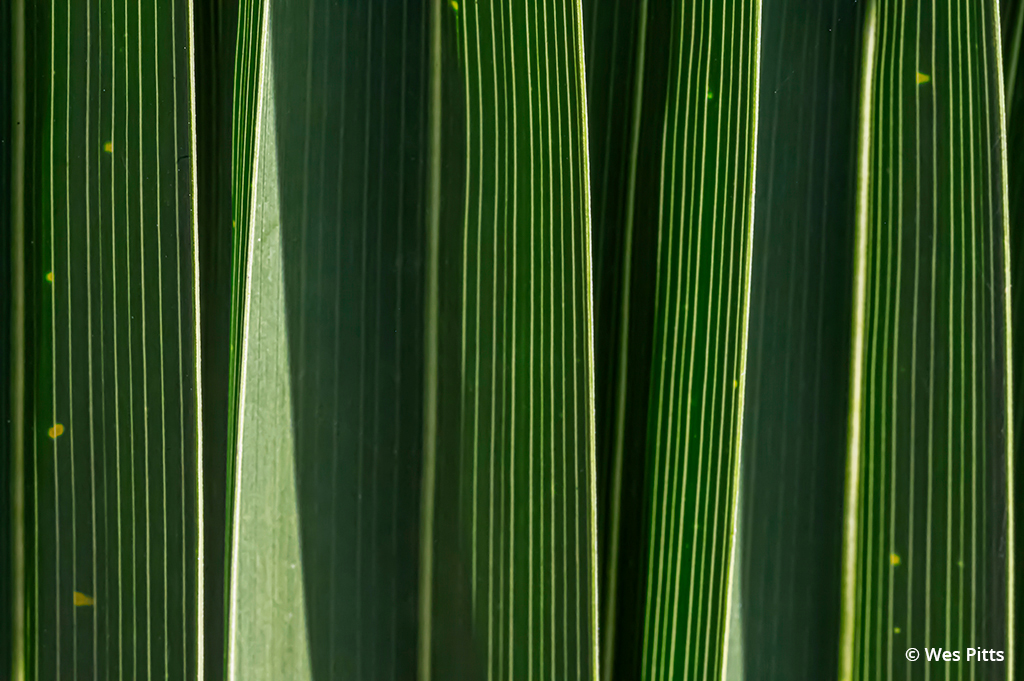
Leaf detail, Canary Island date palm. Don’t limit your macro photography to literal documentary. Experiment with abstract compositions that highlight forms and lines. Even a mundane leaf can reveal beauty in the right light. Single frame capture, handheld. Exposure: 1/320 sec., ƒ/32, ISO 12800.
I had a lot of fun working with this lens, exploring my garden from a totally new perspective, and practicing my macro technique for the next time I’m further afield. The best gear handles smoothly and practically disappears, allowing you to focus on your photography, and that’s been my experience with Nikon’s Z system, including the NIKKOR Z MC 105mm f/2.8 VR S. The lens is impressively sharp from edge-to-edge, exhibits minimal vignetting and is reasonably priced, relative to its performance, at $999. And though I used it exclusively for macro photography, this is also a great focal length for portraiture, adding to the value of the investment.